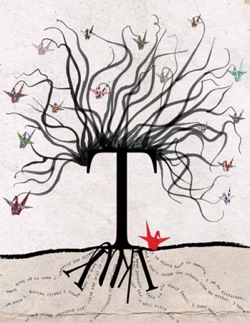- Photonarrative
- Illustration
Penetrating Despair
In my photo narrative, I tell a story of a young girl brought up by strict parents who have reached great success in their lives. With very high standards and expectations set for her by her parents, Erin always obeyed their orders and did as she was told. However, this great amount of discipline lead her to have no mind of her own. Eliminating Erin's freedom to express her personal thoughts and feelings was not beneficial to her whatsoever. As she matured to a young adult and drifted away from the control of her parents, Erin could not handle living without guidelines and restrictions put on her. Certain barriers Erin ran into when she grew older, such as moving into her own apartment, left her alone with and empty mind, not knowing what to do with her life. The older she got, and farther from her parents' control, the deeper Erin's hope to take control of her life diminished.
In my photographs I depict two crucial points in this girl's life. As Erin looks at herself in a mirror at an earlier stage in her life, her face shows shock and also fear. This girl who appears in the mirror image is not who Erin imagines to see, for she does not know the person that she really is. The next image of Erin in a later stage in life depicts the young woman's confused and scattered mind. The white moving boxes stacked up against the white wall, and her white dress symbolize repetition. As a child, Erin repeatedly made the mistake of merely following directions, never exploring the world by herself, or taking risks and chances in life. Erin's mistake of being passive, allowing her parents to force her to live a lifestyle which only they preferred, eventually altered her ability to make personal choices in her everyday life as an adult.
Unattached
In my illustration, I tell a narrative story that I wrote in English class about a young Japanese immigrant who comes to America feeling lost, uncomfortable, and disoriented. My main character, Yuki, recognizes immediately on her first day of school that she does not fit in with her other classmates. Trying to adjust to a completely new environment is both intimidating and difficult. As Yuki realizes that she is surrounded by children who look nothing like her whatsoever, she struggles to find a way to connect with this complete group of strangers to whom she is just a foreign alien.
The dispersed origami cranes hanging from the tree with various patterns represent the strangers who encompass Yuki on her first day of school. All of the cranes are connected to another through their intertwined branches. This can depict the similarities that Yuki's classmates share. Unfortunately, Yuki does not have anything in common with her new classmates, from her physical features to her social behaviors. The single, lonely crane below on the ground with a solid red color represents Yuki, who stands out very easily in her class of American children. The red crane is not attached to the tree, for Yuki cannot find a way to affiliate herself with the other students by means of any sort. I utilized typography in both the structure of the tree and the roots penetrating beneath the ground from the tree trunk. Some of these roots symbolize emotions and feelings which twirl around like a tornado in Yuki's scattered mind as she is unattached and excluded from everyone else in America. However, others of the roots show that Yuki is still attached to her old Japanese roots, although she is not physically on Japanese soil anymore.








